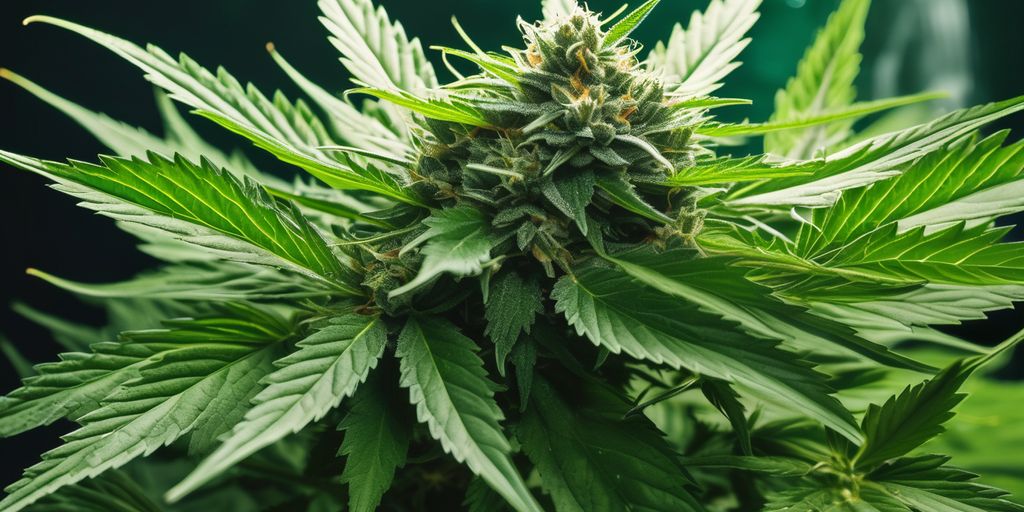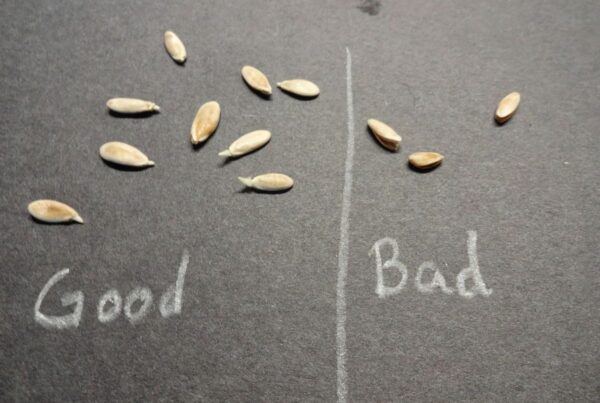In the world of cannabis cultivation, micronutrients play a crucial but often overlooked role in promoting healthy plant growth and maximizing yields. These tiny titans, including elements like iron, zinc, and manganese, are vital for various physiological processes within the plant. This article delves into the essential micronutrients for cannabis, explores the balance between micronutrients and macronutrients, and offers guidance on optimal feeding practices to prevent deficiencies and ensure robust plant health.
Key Takeaways
- Understanding the roles of key micronutrients like iron, zinc, and manganese is crucial for healthy cannabis growth.
- Balancing micronutrients with macronutrients is essential to avoid nutrient imbalances that can affect plant health.
- Correct dosage and feeding practices are vital to prevent overfeeding or underfeeding, which can lead to nutrient deficiencies or toxicities.
- Monitoring and adjusting soil pH levels can significantly impact the availability and uptake of micronutrients.
- Recognizing the signs of micronutrient deficiencies early can help in applying corrective measures promptly, ensuring plant health.
The Tiny Titans: Essential Micronutrients for Your Cannabis
Iron (Fe) – The Mighty Strengthener
Iron ain’t just for pumping at the gym, folks. In the cannabis world, it’s the heavyweight champ that helps your plants stay strong and green. Without enough iron, your plants might start looking a bit pale, like they’ve been binge-watching Netflix all night without a break. Keep an eye on those leaves; if they’re turning yellow between the veins, it’s time to pump some iron into that soil!
Zinc (Zn) – The Growth Booster
Zinc is like the secret sauce for your cannabis plants. It’s crucial for growth hormone production and helps in flower development. Think of it as the motivational coach for your plants, pushing them to grow bigger and better. A lack of zinc can make your plants look stunted, like they’re stuck in a perpetual ‘just woke up’ state. So, sprinkle that zinc like it’s fairy dust and watch your plants thrive.
Manganese (Mn) – The Metabolism Manager
Manganese might not get the spotlight often, but it’s the silent hero managing your plant’s metabolism. It plays a key role in photosynthesis and nutrient absorption. Without it, your plants could end up looking like they’ve been on a diet they never signed up for. Keep manganese levels in check to ensure your plants have the energy to grow up healthy and strong.
Remember: Micronutrients might be tiny, but their impact on your cannabis plants is huge! Don’t overlook these essential elements if you want to see your plants flourish.
Balancing Act: Micronutrients vs. Macronutrients
Why Both are Crucial
In the world of cannabis cultivation, it’s easy to get caught up in the big players like nitrogen (N), phosphorus (P), and potassium (K). But let me tell you, those tiny micronutrients pack a punch too! Both macronutrients and micronutrients are essential for your plants to thrive. Without a good balance, you might as well say goodbye to those lush buds.
Finding the Sweet Spot
Finding the right balance between macronutrients and micronutrients can feel like trying to balance a seesaw with a bulldog on one end and a chihuahua on the other. It’s all about the ratios, folks! Here’s a quick rundown:
- Macronutrients: Needed in large amounts
- Micronutrients: Required in smaller doses but just as crucial
Getting this balance right is the secret sauce to a healthy, happy cannabis plant.
The Impact of Imbalance
An imbalance can throw your plants into a world of hurt. Too much of one can block the uptake of others, leading to all sorts of problems. It’s like throwing a wrench in the gears of your plant’s growth. Keep an eye on those levels and adjust as needed to keep everything running smoothly.
The Art of Feeding: How Much is Just Right?
Understanding Recommended Amounts
Navigating the world of cannabis nutrients can feel like trying to solve a Rubik’s Cube blindfolded. But don’t worry, we’ve got some tricks up our sleeves. Recommended amounts of micronutrients vary by stage: vegetative or flowering. It’s all about reading the signs your plant gives you and adjusting accordingly. Here’s a quick rundown:
| Growth Stage | Micronutrients (ppm) |
|---|---|
| Vegetative | 20-30 |
| Flowering | 30-40 |
Signs of Overfeeding
Ever seen a plant that looks like it’s been on a fast-food diet? That’s overfeeding for you. Symptoms include burnt tips and unusually dark leaves. Dial it back a notch if you see these signs. Remember, more isn’t always better; it’s about finding that sweet spot.
Signs of Underfeeding
On the flip side, a plant that’s too pale might be crying out for more nutrients. Yellowing leaves and stunted growth are your clues. It’s like your plant is saying, ‘Hey, I’m starving over here!’ Give it a little nutrient boost, but just enough to perk it up without going overboard.
The pH Factor: Nutrient Uptake and Availability
Why pH Levels Matter
Navigating the delicate pH balance is like orchestrating a symphony; each note must align flawlessly for harmony. In the context of growing cannabis, pH dictates the plant’s ability to assimilate a spectrum of nutrients from the growing medium. A slight deviation from the sweet spot—the coveted pH range of 6.0 to 7.0 in soil and 5.5 to 6.5 in hydroponics—can negate nutrient availability, locking out crucial minerals and stagnating growth.
Adjusting pH for Optimal Uptake
Soil pH plays a critical role in determining the availability of micronutrients. Cannabis plants have different pH preferences for optimal nutrient uptake, and maintaining the right soil pH unlocks the treasure trove of micronutrient nourishment. Here’s a quick guide on how to adjust your soil pH:
- Test your soil’s pH regularly with a reliable pH meter.
- Add lime to increase the pH or sulfur to decrease the pH, depending on your test results.
- Re-test and adjust as needed to maintain the ideal pH range.
Common pH Pitfalls
Picture your cannabis plants as connoisseurs of fine dining. Just as certain dishes require specific seasonings to reach their full flavor potential, cannabis plants thrive when their preferred soil pH conditions are met. However, it’s easy to slip up, and here are a few common pitfalls:
- Overcorrecting pH when trying to adjust levels quickly.
- Neglecting regular pH testing and adjustments.
- Ignoring the signs of pH imbalance, such as leaf discoloration or stunted growth.
Stay tuned as we explore specific micronutrient deficiencies and their remedies in the upcoming sections.
Spotting Trouble: Recognizing Micronutrient Deficiencies
Common Symptoms
Alright folks, let’s talk about the warning signs your cannabis plants might wave at you when they’re feeling a bit under the weather, micronutrient-wise. You might see leaves turning as yellow as a school bus or growth that’s more stunted than my cousin Eddie’s racing career. Keep an eye out for these tell-tale signs:
- Yellowing or discoloration of leaves
- Stunted growth or distorted leaves
- Leaf spots or necrosis
- Poor flowering and fruiting
- Reduced overall vigor
Diagnosing the Issue
Now, don’t just stand there like a deer in headlights! When you spot these symptoms, it’s detective time. Compare what you see with deficiency charts or, better yet, get your soil and plant tissue tested. This ain’t no guessing game; it’s science, baby! Remember, nutrient lock-out could be the big bad wolf here, messing with your plants because of poor pH or nutrient ratios.
Corrective Measures
Caught the culprit? Great! Now let’s fix it. Start with adjusting your feeding schedule or maybe your pH levels. Sometimes, all it takes is a little tweak to get those girls back in tip-top shape. And if you’re feeling stuck, there’s no shame in reaching out for help—better safe than sorry when it comes to your green ladies!
Remember, a happy plant is a productive plant. Keep those nutrients balanced and your pH on point!
From Soil to Oil: Optimizing Soil Conditions for Micronutrients
Choosing the Right Soil
Down here in southern Oklahoma, we know a thing or two about dirt. Not all soil is created equal, especially when it comes to growing top-notch cannabis. You gotta pick the right type of soil that’s just thirsty enough to hold onto those precious micronutrients but not so clingy that it suffocates the roots. Think of it like dating – you want a soil that’s supportive but not overly possessive!
Enhancing Soil with Micronutrients
Now, once you’ve swiped right on the perfect soil, it’s time to spice things up a bit. Adding the right amendments can make all the difference. We’re talking about a little compost, maybe some bone meal, and definitely those critical micronutrients like iron and manganese. It’s like seasoning your favorite dish – a little pinch here and there brings out the best!
Monitoring Soil Health
Keep an eye on your soil like it’s the season finale of your favorite show. Regular testing for pH levels and nutrient content can save you a lot of drama. Adjust as needed, and remember, overdoing it with nutrients can be just as bad as not giving enough. It’s all about finding that sweet spot where your cannabis plants can thrive without turning into drama queens.
Remember, the goal is to create a soil environment where your cannabis plants feel at home and can access all the nutrients they need without any fuss.
The Connoisseur’s Choice: Top Micronutrient Products Reviewed
What Makes a Product Stand Out
In the world of cannabis cultivation, not all micronutrients are created equal. The real champs are those that bring noticeable improvements to plant health and yield. It’s all about finding products that are easy to use, effective, and, let’s be honest, won’t break the bank.
Top Picks for Cannabis Cultivation
Here’s the scoop on what’s hot in the micronutrient market:
- FoxFarm Liquid Nutrient Trio – A favorite for its comprehensive nutrient profile.
- General Hydroponics Flora Series – Praised for its versatility and consistent results.
- Advanced Nutrients Big Bud – Known for boosting bud size and density.
These products have been battle-tested in the fields and come highly recommended by fellow growers.
Real Grower Reviews
Nothing beats real-world feedback. Fellow growers in southern Oklahoma swear by these products, noting their effectiveness and ease of use. It’s like having a good neighbor who’s got your back—except it’s a bottle of nutrients!
Wrapping It Up: The Tiny Titans of Cannabis Cultivation
And there you have it, folks! We’ve dug deep into the world of micronutrients, those tiny titans that pack a powerful punch in the realm of cannabis cultivation. From iron to zinc and beyond, these little guys may be needed in small doses, but they’re absolutely non-negotiable for your plants to thrive and throw a party in their pots. Remember, while they’re just a small part of the nutrient family, their impact is mighty. So, keep those ratios balanced, watch out for signs of deficiency, and let your cannabis plants shine brighter than a disco ball at a 70s party! Happy growing!
Frequently Asked Questions
What are micronutrients and why are they important for cannabis growth?
Micronutrients are essential minerals required in small amounts for the healthy growth and development of cannabis plants. They play crucial roles in various metabolic processes and are vital for functions such as enzyme production, photosynthesis, and overall plant health.
Which micronutrients are crucial for cannabis?
Key micronutrients for cannabis include Iron (Fe), Zinc (Zn), Manganese (Mn), Copper (Cu), Boron (B), Molybdenum (Mo), Nickel (Ni), Chlorine (Cl), and Cobalt (Co).
How can I tell if my cannabis plants are getting too much or too little micronutrients?
Signs of overfeeding include burnt leaf tips and unusually dark foliage, while signs of underfeeding are yellowing leaves and stunted growth. Regular monitoring and adjusting nutrient levels can prevent these issues.
How do pH levels affect micronutrient uptake in cannabis plants?
pH levels significantly influence the availability of micronutrients in the soil. Optimal pH levels ensure that micronutrients are neither too soluble (causing toxicity) nor too insoluble (causing deficiencies), facilitating appropriate uptake by the plant roots.
What are the common symptoms of micronutrient deficiencies in cannabis?
Common symptoms include chlorosis (yellowing of leaves), necrosis (death of tissue), stunted growth, and poor flowering. Identifying these signs early can help in applying corrective measures to restore plant health.
How can I optimize soil conditions for micronutrient availability?
Choosing the right soil type, adjusting pH levels, and possibly supplementing with specific micronutrients can enhance soil conditions, ensuring that cannabis plants receive the necessary nutrients for optimal growth and health.








